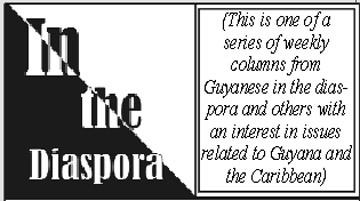By Selma James
Selma James is founder of the International Wages for Housework Campaign and author of The Power of Women and the Subversion of the Community, and Sex, Race, and Class – the Perspective of Winning
Editor’s Note: This article first appeared in the London Guardian, April 2, 2013. It is not to be reprinted without express permission of the author.
Fifty years ago, after a March as cold as the one just gone, my husband CLR James’s semi-autobiographical Beyond a Boundary appeared as the cricket season opened. Reviews were favourable, but none even approached the incomparable (and anti-racist) John Arlott’s, in Wisden, “the cricketers’ Bible”.
It was the almanac’s centenary edition (19 April 1963), itself a national event: “1963 has been marked by the publication of a cricket book so outstanding as to compel any reviewer to check his adjectives several times before he describes it and, since he is likely to be dealing in superlatives, to measure them carefully to avoid over-praise – which this book does not need … in the opinion of the reviewer, it is the finest book written about the game of cricket.”

Years later I learned that it was Lamming who had named it – almost. He had proposed Beyond the Boundary, which the publisher changed to “a” for no reason we could agree with. “The” challenges all boundaries, not just cricket’s – a true description of the book.
It was a book CLR had to write. He understood the game, he believed, in ways most experts did not and could not. He considered himself more scrupulous about the game’s technique and how it grappled with team dynamics, skills, players’ concentration and the psychological war between batsman and bowler, batsman and fielders. And he saw the game not only as it was played but as it was lived – and for West Indians that meant first of all a colonial society stratified by race and class. His unblinking description of the shades of status among cricket clubs cuts like glass.
Because he was clever and literary, CLR could join the club of either the lighter or the darker skinned cricketers; he confesses having chosen the former. “So it was that I became one of those dark men whose ‘surest sign of … having arrived is the fact that he keeps company with people lighter in complexion than himself’. My decision cost me a great deal … by cutting myself off from the popular side, [I] delayed my political development for years.”
Establishing early the interconnection between cricket and race and class divisions opens the way for Beyond a Boundary to fulfil its author’s full purpose: to draw out other startling connections – cricket and art, life in ancient Greece, even rewriting English social history with cricket’s great WG Grace as a crucial figure. As startling as his connections is the light he sheds on each – not only cricket but every subject benefits from shattering boundaries. We are invited to reject the fragmenting of reality, and to see its diverse interconnections without which we are prevented from ever knowing anything fully – including our own reality. What do they know of cricket, or anything, if it is walled off from every other aspect of life and struggle?
CLR approached each area of concern with the method of thought learned from Marx and Hegel, and from his study of history. He considered it impossible to think in a disconnected or artificially linked way. But dialectical thinking depended on attention to detail. In cricket, his foundation was its technique.
Beyond a Boundary demonstrates that profound connections can be grasped by a popular sporting audience. Here, cricket was CLR’s touchstone, but he had been doing the same with many subjects for years.
When the manuscript was near completed CLR was invited to return home after 26 years away. He spent four years working to end colonial rule and bring the islands together in a federation. The independence came, but the West Indies Federation failed. What stayed “federated” was the cricket.
But this great cricketing nation, with a primarily Afro- and Indo-Caribbean population, had always been captained by a white man. CLR, now editor of the Nation, Trinidad’s ruling party newspaper, seized the time. The man to captain was Frank Worrell, a great batsman, a great cricketing mind, and an extraordinary human being. But Worrell, though middle class, was black. CLR plunged in with front-page editorials, cricket facts, and so on. CLR’s penultimate chapter describes the campaign with zest. It upset those who thought challenging the racists who had always governed was too Marxist, and would lead to “communism”.
But we won, and the day after, Prime Minister Eric Williams, aiming to placate the anti-communists at his party’s annual conference, said: “If CLR James took it upon his individual self to wage a campaign for Worrell as captain of the West Indies team …” That’s all I heard. Williams’s words were drowned in a roar of applause and shouts and celebration: a piece of the imperial past had gone.
Beyond a Boundary was part of a movement. Soon after, the anti-apartheid boycott swept across every sport and a Black Power salute from the Olympic podium shook the world. Campaigns against discrimination (including sexism) in sport no longer startle. Alas, what sportspeople contend with on the playing field is still cordoned off from injustice beyond the boundary – from stop and search to benefits cuts to disabled people orchestrated by Paralympics praise.
The book opened a new chapter in sports writing, and inspired Joseph O’Neill to write Netherland, a novel dissecting American society whose touchstone is the cricket brought by immigrants to New York. The 2001 film Lagaan, about an Indian cricket match, is a wonderful example of the beauty and truth that emerges with a judicious mix of cricket and class struggle.
Everywhere we are confined by boundaries but we struggle to break out.




